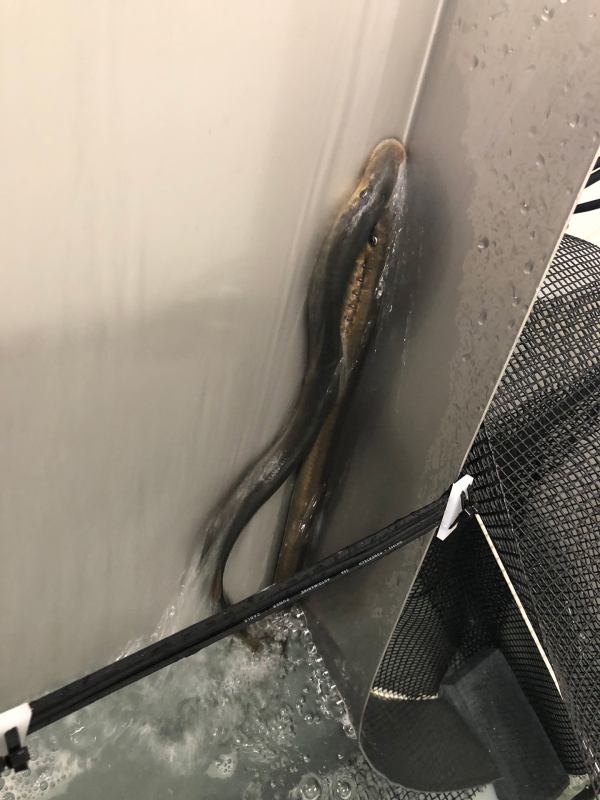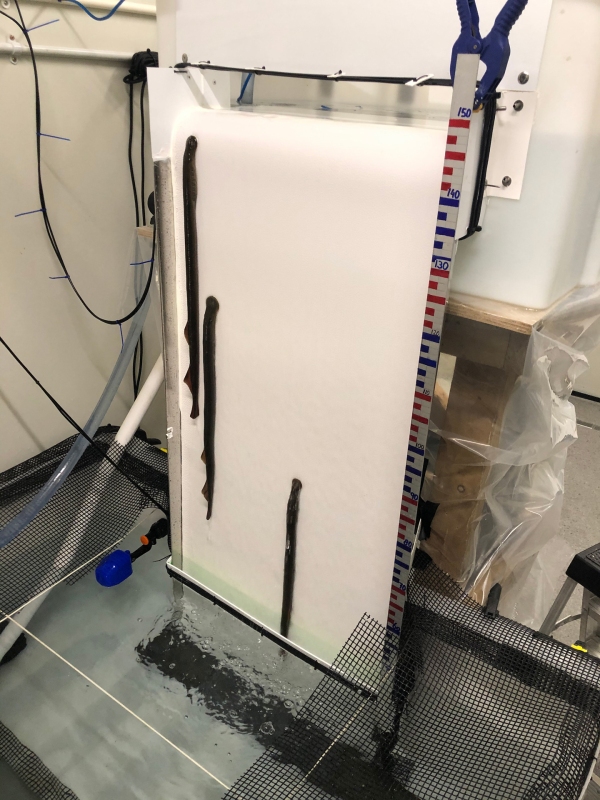At night, in the NIWA lab in Hamilton, lamprey have been climbing structures to help scientists understand how they can navigate waterways.
NIWA principal scientist Cindy Baker leads the lamprey passage structures project. The research aims to develop and recommend passage structures for lamprey to assist their migration.
Lamprey (piharau in the North Island, kanakana in the South Island) start life in freshwater, grow to adulthood in the sea, then return to freshwater to breed. The pouched lamprey (Geotria australis) is the sole lamprey species in New Zealand. This species has been around for over 360 million years and is an historically important food source for Māori (a taonga species).
Lamprey populations have declined across New Zealand and they are now classified as “Threatened – Nationally Vulnerable” by the Department of Conservation. The protection of threatened species habitats is a compulsory value in the new National Policy Statement for Freshwater Management. Migration barriers have been implicated in the decline of lamprey populations, especially high head dams.
“Knowing how to design fishways to promote passage is a key factor in ensuring that adult lamprey can move through modified landscapes.”
Lamprey passage requirements differ from other fish species because they are large bodied and can climb using their sucker mouths.
Cindy’s lamprey passage experiments took place over five hours with two different slopes and three different surfaces on ramp structures. The experiments re-created lamprey migration in a lab environment. The ramp surfaces were stainless steel, textured high-density polyethylene (HDPE, a non-toxic plastic), and smooth HDPE.
“Across the five hour trial, at an angle of 45°, lamprey repeatedly passed the textured and stainless steel ramps but slipped down the smooth HDPE ramp. As ramp angle increased to 60°, progress over the stainless steel ramp was slower and lamprey failed to climb the smooth HDPE. Overall, pouched lamprey have improved passage with textured surfaces, unlike Pacific lamprey species, which prefer smooth stainless steel. A 45° angle was found to be the optimal slope for lamprey passage over the textured surface,” says Cindy.
This work informs strategies for increasing protection and recovery of threatened and at-risk freshwater species and is part of the larger Habitat Bottlenecks programme funded by MBIE.



